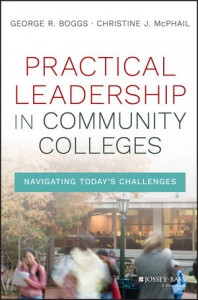Considerations for Politicians as College Presidents
Some politicians make good college presidents, at least on paper. As Rick Seltzer reported in Inside Higher Education last week, the best of them possess many of the same skills as successful college and university presidents. They are typically well connected with outside stakeholders, enjoy good name recognition, and know how to fundraise, at least with certain groups of donors. Many of them have some knowledge of higher education – usually on a macro level – that sets them apart within a pool of potential candidates when presidencies open up.
Mr. Seltzer noted that the most recent American College President Study found that about two percent within a pool of candidates in presidential searches had at least some political experience at the local, state, or federal level in their previous positions.
Long Tradition, Bumpy Road
The most famous historical examples perhaps are Woodrow Wilson and Dwight Eisenhower, who served as presidents of Princeton and Columbia, respectively. Thomas Jefferson and James Madison were the first rectors of the University of Virginia. There are also recent examples of politicians-turned-presidents whom many Americans perceive as successful, whatever their detractors say. University chancellors and presidents in Indiana, Massachusetts, North Carolina, California, and Oklahoma are among them.
It’s a long tradition that has also faced a bumpy road. The recent donnybrooks at Kennesaw State University and the University of West Florida provide concrete real-time case studies.
Let’s not get into the weeds on the merits of each case but look instead at the principles, process, and expectations placed upon politicians seeking a college presidency. In doing so, it’s easy to see why confrontations can occur over a selection and to suggest ways in which these controversies can be avoided. Further, let’s agree to treat the issues at public and private institutions similarly.
Presidential Search Process Must Be Thoughtful, Deliberate, and Balanced
In any pool, the best candidate on paper, following the interview process and after an analysis of what an institution needs, should win the position. It’s important to recognize, however, that it is not enough for the candidate to “shock and awe” during the search process except perhaps at needy institutions with weak search committees. That process must be thoughtful, deliberate, and balanced. It presumes that the search process is fair, the search committee is seasoned and balanced, and political and personal prejudices are put aside during the selection. It is sophomoric to suggest responsibly that the search can produce some cross between Superman and Clark Kent on a good day to find a perfect candidate.
Further, a good screening of candidates assumes that search committee members represent key stakeholder classes and that the institution’s system of shared governance works. It is the responsibility of the Board to be careful in its charge to the committee. With that charge, however, must come a mandate to create a balanced pool of traditional and non-traditional candidates.
Traditional candidates presumably understand how American higher education works. Non-traditional candidates offer insight and broad experience from their work outside the academy.
Occasionally, a search will even turn up candidates with experiences across several occupational and employment lines.
Don’t Assume Step Up is Easy for Senior Higher Ed Leaders
An emerging concern is the growing reluctance of senior higher education leadership to move into presidencies. Many provosts simply do not want the job. Further, the ongoing continuing education to support their role as president and the continuing education critical to ensure that they are well trained for it is episodic and spotty at best.
For many “provost presidents,” the presumption is that they know what they are doing. But serving as the chief academic officer is often quite distinct from what is required by their new duties. For others, there is simply a “deer with their eyes caught in the headlights” series of challenges to be faced in the first critical years of a presidency.
Many former provosts are extremely successful as presidents and serve with honor and distinction. But the job is more complex than being a ceremonial mayor disguised as a patriarchal father figure.
The non-traditional candidates in the pool are a much smaller group. The best case for them may well be that there increasingly appears to be a growing crisis in the American college presidency as demands, fueled by shifting expectations and attitudes, social media pronouncements, and economic pressures built upon a collapsing and unsustainable operating model, detract from the stature formerly considered part of the job.
Higher Ed Learning Curve, Especially Shared Governance, is Steep for Politicians
Non-traditional candidates can provide a solution for an institution in which presidents have presided but not led. They have insight and are usually change agents that can make their candidacy attractive at colleges and universities where aspirations still matter. It only works when these institutions know what they want. And most importantly, the Board must be prepared to stand with the president, keeping their noses in and their hands outside of the tent.
At these institutions, a politician-turned-president may be an attractive solution, especially if the politician has shown creativity and ingenuity in the way that they govern. Choosing a narrow ideologue almost never works, especially among faculty and students who value academic freedom.
Politicians must be willing to learn the job – especially their role in shared governance for which they will have no direct experience but considerable unofficial training – if they are to be successful.
But politicians can be a good choice. Their addition to a deep pool of presidential candidates can add tremendous value. And a number of them matched to the right circumstances will make fine presidents.


